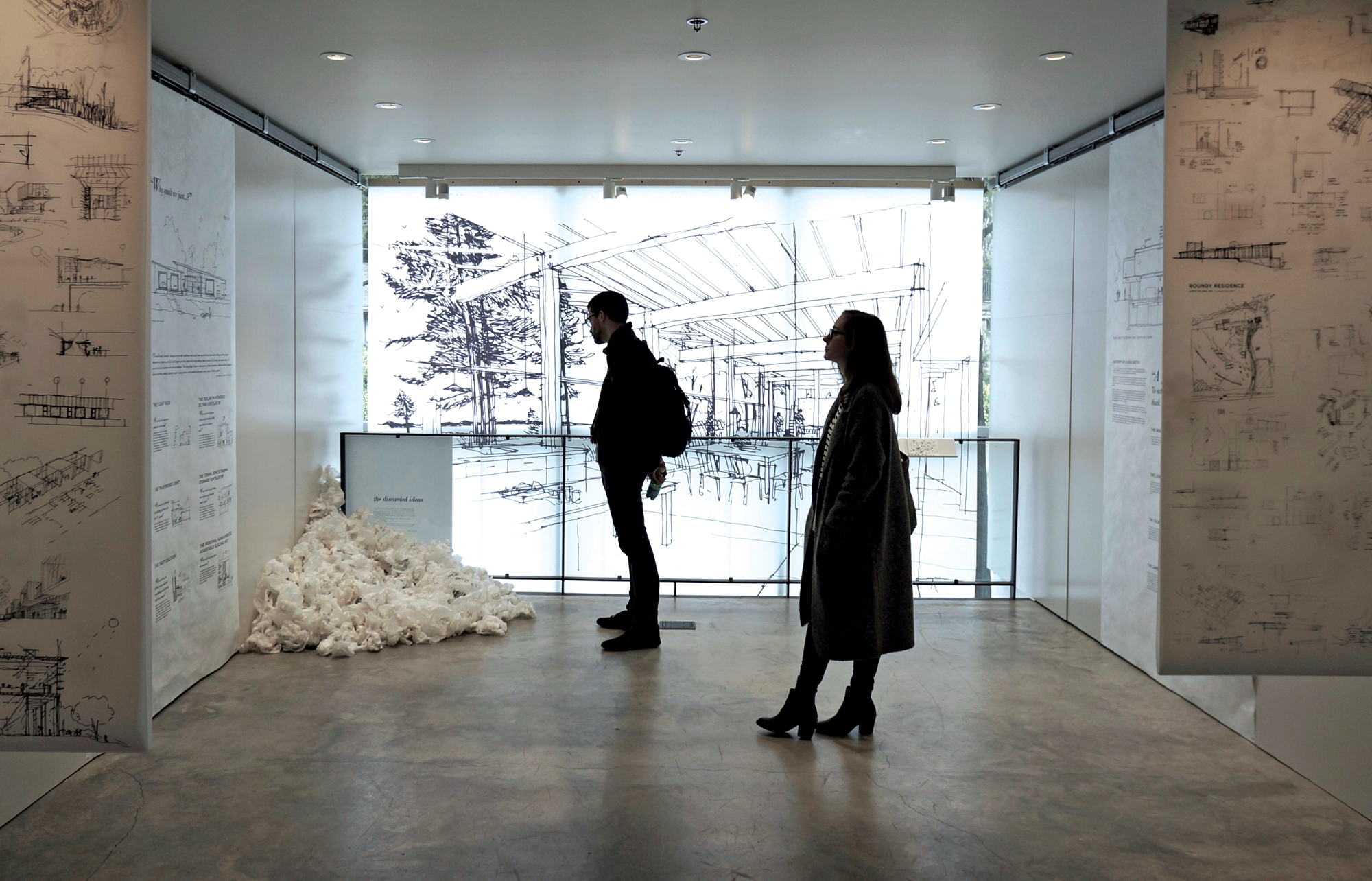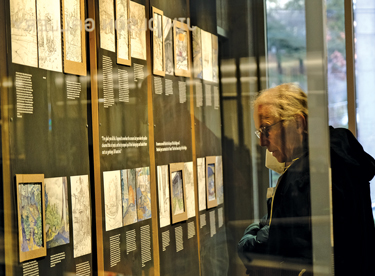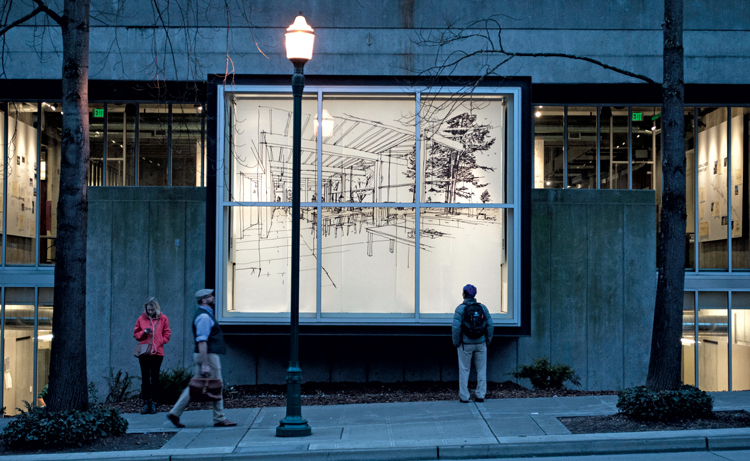

If the University of Washington had an arts row, 15th Avenue Northeast would be it. Moving from north to south, we have the Burke Museum of Natural History and Culture, the Henry Art Gallery and finally the College of Built Environments’ Gould Gallery. Emerging elegantly from Gould Hall’s Brutalist gray concrete exterior, the gallery features works of societal impact.
“The Gould Gallery provides a unique opportunity to showcase the powerful influence of the built environment on the world’s most pressing social and environmental challenges. By highlighting the critical role of the built environment in these issues, we aim to inspire others to take action and make a positive impact on the world around us,” says Renée Cheng, the college’s John and Rosalind Jacobi Family Endowed Dean. The diverse array of exhibitions includes everything from student work to renowned traveling exhibitions—something the college didn’t have a place for before the 1,300-square-foot space officially opened in 2015.

Viewers inside Gould Gallery enjoy a closeup view of design solutions to social problems.
Here, design disciplines tackle the big questions. “How can sketching in landscape architecture become a prompt for design activism?” was one of the questions addressed at the recent “Sketching as a Witness” exhibition. Architecture students in the Mexico City study-abroad program were challenged to create a zoning proposal that addressed affordable housing, access to public resources and increasing density while also sustaining the region’s identity, community and history. Society’s most urgent needs are being solved through the lens of design.
The lasting impact of the University manifests in this space as well. One exhibition was designed by world-famous architect Steven Holl, ’71, as a tribute to the College of Built Environments’ renowned Architecture in Rome Program and Rome Center, and its founder, professor Astra Zarina, ’53. Holl traveled to the Eternal City, along with another future notable Seattle architect, Ed Weinstein, ’71, as one of the program’s first students in 1970. Other famous names are written all over the three-part space, literally. Emblazoned on the sleek glazing of the gallery’s inside walls are figures that loom large in the roster of the region’s architectural luminaries: L. Jane Hastings, ’52, Norman Johnston, ’42, Jim Olson, ’63, and George Suyama, ’67. Both Olson (Olson Kundig) and Suyama (Suyama Peterson Deguchi) have curated shows in the gallery, and the gallery itself was designed by architect and professor David Miller of the distinguished Seattle firm Miller Hull.
Exhibiting student art and design work is a grand tradition in higher education. But dig deeper and certain elements of this space are not like other university galleries. Sure, there are white walls and polished glass. But a closer look reveals that the clean-lined room was designed to be a really refined example of the traditional crit board space, where students tack up recent projects, bulletin board-style, for professors to review. Much like the rest of the interior of Gould Hall itself, the gallery gives off the feeling of a living, breathing entity. Walls are modular so that the room can be pushed and pulled into the perfect configuration to accommodate the needs of the exhibit.

Passersby enjoy an exhibition in Gould Gallery featuring the drawings of Bob Hull, the late founding partner of the Miller Hull architectural firm.
At the heart of the gallery, there’s community. One particularly captivating program is the McKinley Futures Studio, where each year a small group of students are given a problem to solve using approaches that span disciplines within the built environment. Last fall, for instance, the studio worked with the Pacific Coast’s Shoalwater Bay Indian Tribe to develop nimble responses to the growing threats to its coastal ecosystem—one that happens to be the most rapidly eroding portion of the U.S. Pacific coastline. Leaping from theory to reality, students created future projections of the land and crafted visionary responses to bolster the tribe’s current strategies. Together, these efforts are leading-edge, adaptive planning and design for areas at risk for climate change-driven floods.
Joshua Polansky, ’02, ’09, ’17, the college’s director of operations, views the space as the physical embodiment of what the college is all about. “Our Gould Gallery programming encourages dialogue, fosters collaborations and drives progress toward a more sustainable future,” Polansky says. It’s an active space where students work with faculty to see exhibitions through from beginning to end. Polansky adds, “We show our interdisciplinarity and offer our best solutions and ideas through what we display here. This is also a place where our students can encounter perspectives from beyond UW, and we hope they’ll keep returning after graduation to see how the college continues to engage with local and global challenges.” Those future graduates might have some of the most diverse careers to come out of one building. Whether it’s creating a sustainable chair or a proposal for a livable mega-city, the problems of tomorrow might just be getting solved by a designer.
Gould Gallery is open to the public 10 a.m. to 5 p.m. Monday through Friday. It is located inside Gould Hall, 3950 University Way N.E., Seattle. Admission is free.